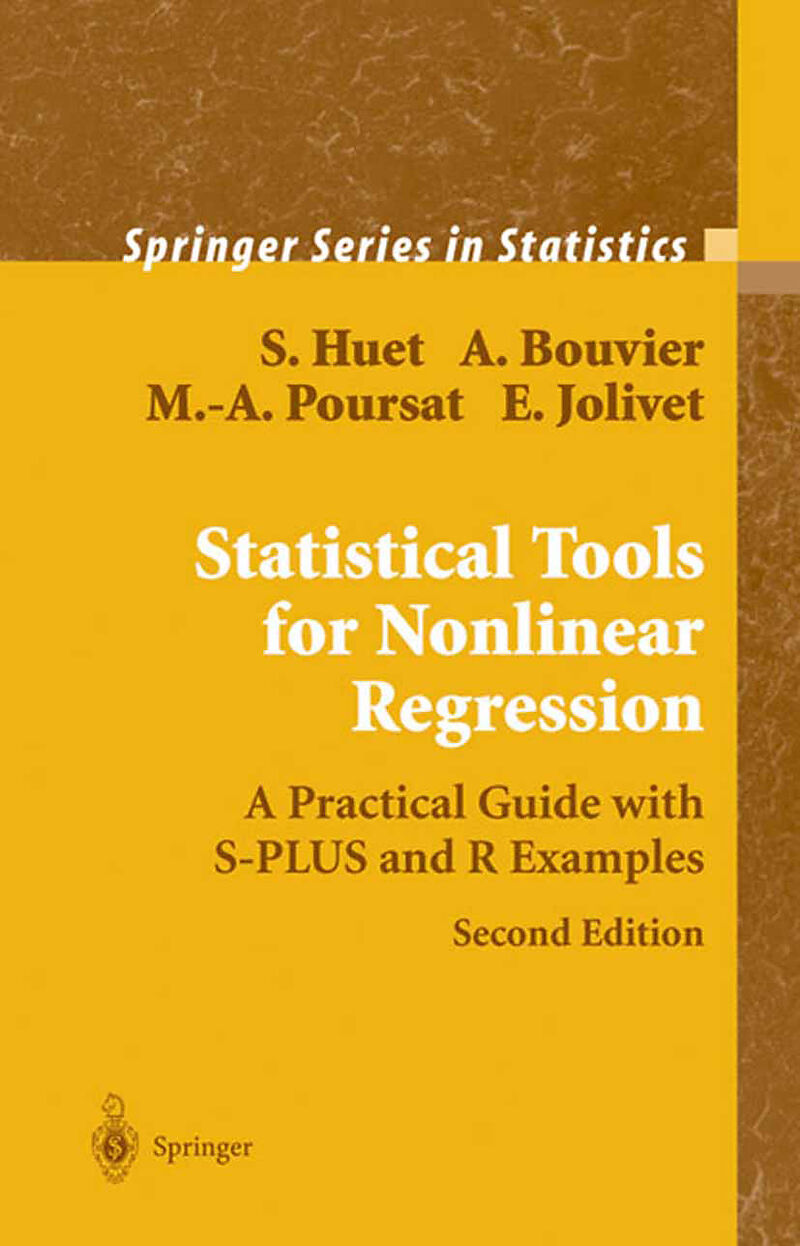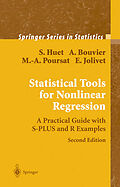

Statistical Tools for Nonlinear Regression
Beschreibung
This book provides the user with a quide to data analysis using nonlinear regression models. The book emphasizes examples in biology and agriculture and does not include any proofs. The second edition includes several new topics, such as binominal, multinomial...Format auswählen
- Kartonierter EinbandCHF 96.40
- E-Book (pdf)CHF 59.90
- Fester EinbandCHF 116.00
Wird oft zusammen gekauft
Andere Kunden kauften auch
Beschreibung
This book provides the user with a quide to data analysis using nonlinear regression models. The book emphasizes examples in biology and agriculture and does not include any proofs. The second edition includes several new topics, such as binominal, multinomial, and Poisson non-linear models.
From the reviews of the second edition:
"Users of S-PLUS or R who do nonlinear estimation would certainly want a copy of this book. The wealth of applications and code for using the specialized software transcends the limitation of the applications to medicine and biology." Technometrics, May 2004
"In this second edition to the first edition published in 1996, the authors present a comprehensive overview of nonlinear regression methods. With an emphasis on learning the basics of how to perform analyses using S-PLUS or R and understand and present the results, the book provides a valuable resource for those interested in learning this material...The book is easy to read, and the inclusion of S-PLUS output, graphs, and source code makes picking up the book and getting started much easier. For those working with data best modeled by nonlinear relationships, this book will be a valuable addition to your shelf of resources." Journal of the American Statistical Association, September 2004
"As the title suggests, the book deals with non-linear regression analysis . The real strength of the book lies in a careful and detailed discussion of a number of examples . Anyone who is interested in actually analysing data using non-linear models will benefit from working through these examples . the book would make an excellent secondary source for a course in non-linear models. A number of excellent references are available that provide the necessary theoretical background ." (Christopher Cox, Statistics in Medicine, Vol. 24 (13), 2005)
"This second edition provides a comprehensive overview of the field of parametric nonlinear regression models in data analysis. The book aims especially at students, as a tutorial book, and at the scientists applying statistical methods in different practical domains. Each chapter begins with a set of different concrete examples, followed by the corresponding statistical issues and solutions. Inaddition, where necessary, a very simple theoretical background is provided." (Florin Gorunescu, Zentralblatt MATH, Vol. 1041 (16), 2004)
"The first 5 chapters of this book discuss normal distribution models where the mean is described with a nonlinear model. Chapter six discusses a nonlinear model with a binomial distribution, chapter seven uses a Poisson and multinomial distribution. The large amount of examples makes this book a valuable contribution to the every day statistical practice." (J. van den Broek, Kwantitatieve Methoden, Issue 72B34, 2004)
"This book describes itself as a 'cookbook' for non-linear regression and is supported by the nls2 software . The chapters are reasonably and logically laid out . There are 42 references, many of which are to other text-books on modeling . The back cover suggests that it may be of use to students as a tutorial book. It is certainly a valuable complement to the nls2 software ." (Paul Hewson, Journal of the Royal Statistical Society, Vol. 198 (1), 2005)
Klappentext
Statistical Tools for Nonlinear Regression, (Second Edition), presents methods for analyzing data using parametric nonlinear regression models. The new edition has been expanded to include binomial, multinomial and Poisson non-linear models. Using examples from experiments in agronomy and biochemistry, it shows how to apply these methods. It concentrates on presenting the methods in an intuitive way rather than developing the theoretical backgrounds.
The examples are analyzed with the free software nls2 updated to deal with the new models included in the second edition. The nls2 package is implemented in S-Plus and R. Its main advantages are to make the model building, estimation and validation tasks, easy to do. More precisely,
Complex models can be easily described using a symbolic syntax. The regression function as well as the variance function can be defined explicitly as functions of independent variables and of unknown parameters or they can be defined as the solution to a system of differential equations. Moreover, constraints on the parameters can easily be added to the model. It is thus possible to test nested hypotheses and to compare several data sets.
Several additional tools are included in the package for calculating confidence regions for functions of parameters or calibration intervals, using classical methodology or bootstrap. Some graphical tools are proposed for visualizing the fitted curves, the residuals, the confidence regions, and the numerical estimation procedure. This book is aimed at scientists who are not familiar with statistical theory, but have a basic knowledge of statistical concepts. It includes methods based on classical nonlinear regression theory and more modern methods, such as bootstrap, which have proved effective in practice. The additional chapters of the second edition assume some practical experience in data analysis using generalized linear models. The book will be of interest both for practitioners as a guide and a reference book, and for students, as a tutorial book.
Sylvie Huet and Emmanuel Jolivet are senior researchers and Annie Bouvier is computing engineer at INRA, National Institute of Agronomical Research, France; Marie-Anne Poursat is associate professor of statistics at the University Paris XI.
Zusammenfassung
Statistical Tools for Nonlinear Regression, Second Edition, presents methods for analyzing data using parametric nonlinear regression models. The new edition has been expanded to include binomial, multinomial and Poisson non-linear models. Using examples from experiments in agronomy and biochemistry, it shows how to apply these methods. It concentrates on presenting the methods in an intuitive way rather than developing the theoretical backgrounds. The examples are analyzed with the free software nls2 updated to deal with the new models included in the second edition. The nls2 package is implemented in S-PLUS and R. Its main advantages are to make the model building, estimation and validation tasks, easy to do. More precisely, Complex models can be easily described using a symbolic syntax. The regression function as well as the variance function can be defined explicitly as functions of independent variables and of unknown parameters or they can be defined as the solution to a system of differential equations. Moreover, constraints on the parameters can easily be added to the model. It is thus possible to test nested hypotheses and to compare several data sets. Several additional tools are included in the package for calculating confidence regions for functions of parameters or calibration intervals, using classical methodology or bootstrap. Some graphical tools are proposed for visualizing the fitted curves, the residuals, the confidence regions, and the numerical estimation procedure.
Inhalt
Nonlinear Regression Model and Parameter Estimation.- Accuracy of Estimators, Confidence Intervals and Tests.- Variance Estimation.- Diagnostics of Model Misspecification.- Calibration and Prediction.- Binomial Nonlinear Models.- Multinomial and Poisson Nonlinear Models.